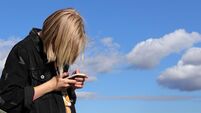Syrians inspired by Gaddafi death
Inspired by the scenes of euphoria in Libya, Syrian protesters have poured into the streets and shouted that President Bashar Assad’s regime will be the next to unravel now that Muammar Gaddafi is dead.
The Syrian uprising has proved resilient over the past seven months, but it has shown some signs of stalling in recent weeks as the government continues a bloody crackdown the UN estimates has killed more than 3,000 people.
Syrian security forces fired on protesters today, killing at least four, activists said.
Although the mass demonstrations in Syria have shaken one of the most authoritarian regimes in the Middle East, the opposition has made no major gains in recent months, it holds no territory and has no clear leadership.
Now the armed uprising in Libya that drove Gaddafi from power – with Nato air support – appears to have breathed new life into the Syrian revolt.
“Gaddafi is gone, your turn is coming, Bashar,” protesters shouted in the central city of Hama, long a hotbed of resistance to the regime.
Gaddafi’s death, after he was dragged from hiding in a drainage pipe, begging for his life, decisively ends the 42-year regime that had turned the oil-rich country into an international pariah.
“Our souls, our blood we sacrifice for you, Libya!” Syrian protesters chanted.
In many ways, the Syrian uprising has taken cues from the Libyans recently.
Syria’s opposition formed a national council like the Libyans’ National Transitional Council, hoping they could form a united front against Assad that Syrians and the international community could rally behind.
With the successes of armed Libyan revolutionaries in their minds, many Syrian protesters say they are starting to see the limits of a peaceful movement, particularly when compared with the armed uprising in Libya.
Some Syrians are calling on protesters to take up arms and inviting foreign military action, hoisting signs that say “Where is Nato?” and urging the world to come to Syria’s aid.
For the most part, Syrian opposition leaders have opposed foreign intervention. There is no central call to arms by the opposition, in part because there is no clear leadership in the movement.
The Syrian opposition is disparate and fragmented, with various parties vying for power as they seek an end to more than 40 years of iron rule by Assad and his late father Hafez.
There have been some clashes in border regions between Syrian forces and apparent defectors from the military, but they have not been widespread.
Still, the growing signs of armed resistance may accelerate the cycle of violence gripping the country by giving the government a pretext to use even greater firepower against its opponents. Authorities have already used tanks, snipers and gunmen known as “shabiha” who operate as hired guns for the regime.
The regime has sealed off the country and prevented independent media coverage, making it difficult to verify events on the ground.














